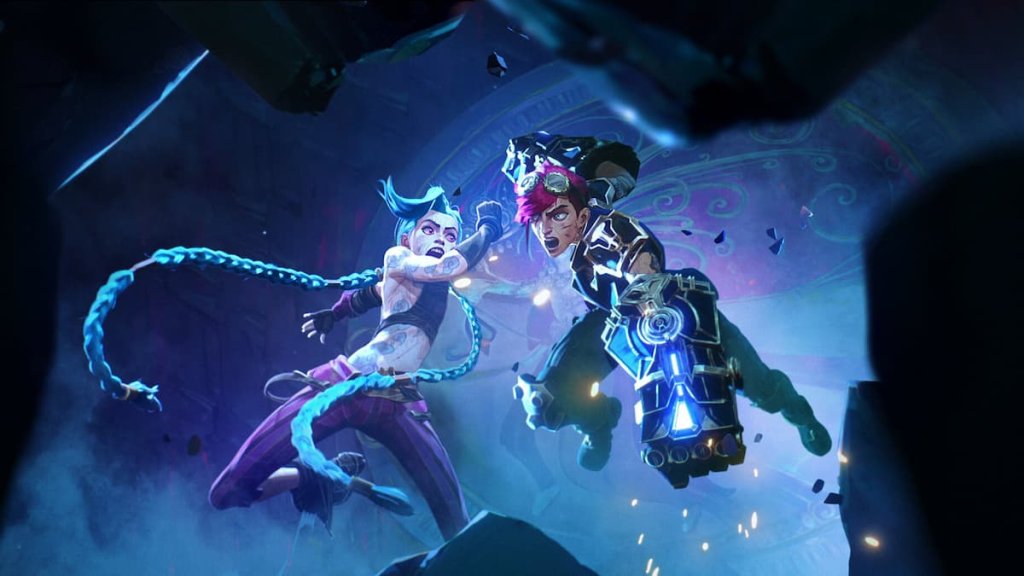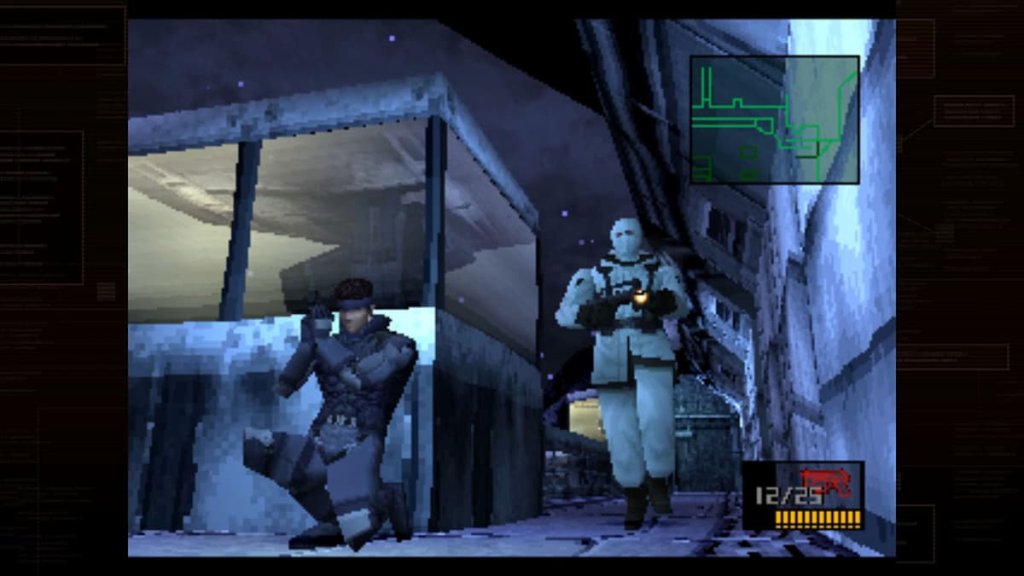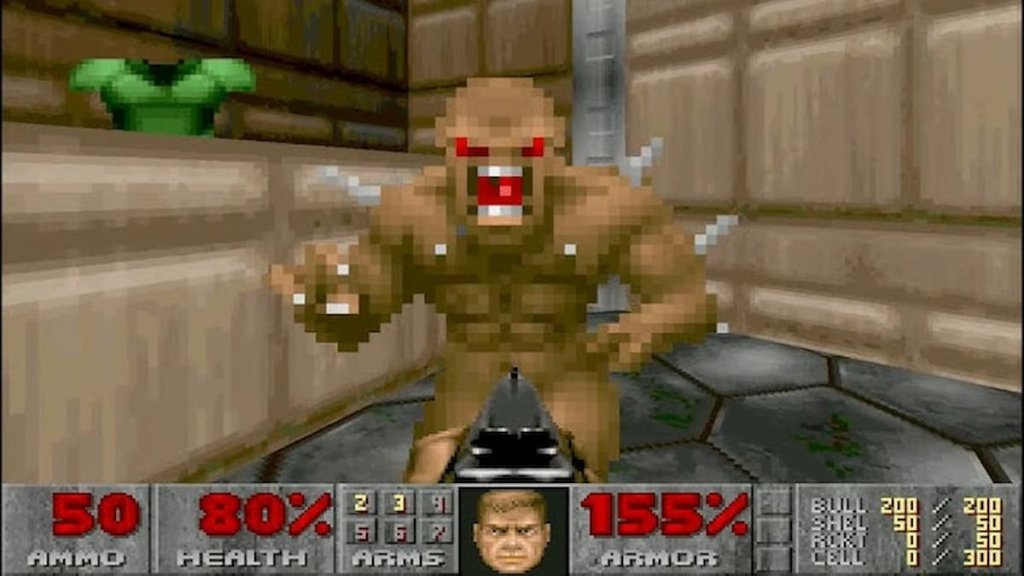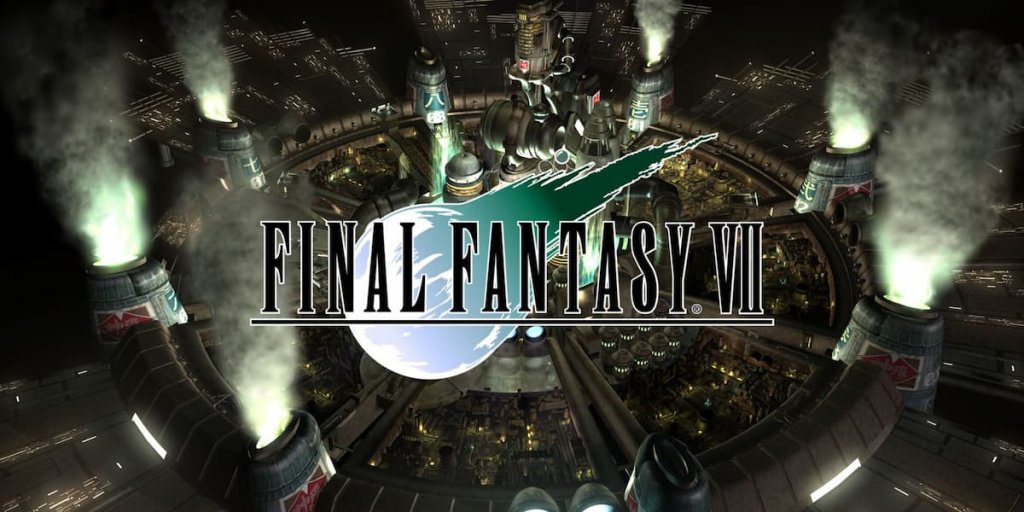All Elder Scrolls Games in Order (1994–2025): Both By Release Date and In-Universe Timeline
Few gaming franchises are as memorably carved into the minds of RPG lovers as The Elder Scrolls. Ever since the series was born back in the 1990s, it’s managed to deliver massive open worlds and rich background story, along with the kind of freedom that makes players keep coming back. Made by Bethesda Game Studios, the series spans several ages across the fantasy realm of Tamriel. With each title, new places are shown, cultures are introduced, and history is shaped by the players’ actions. But for fans who’re either new to the series or trying to grasp all the lore bits, the release order doesn’t always help. That’s because the games don’t always come out in story order. If you’re a fan of Tamriel’s deep lore and massive open worlds, knowing all Elder Scrolls games in order can help you experience the story chronologically.
- 1. All Elder Scrolls Games in Order of Release
- 2. Elder Scrolls Games in Chronological Order
- 1. The Elder Scrolls Online (2E 582)
- 2. The Elder Scrolls Adventures: Redguard (2E 864)
- 3. The Elder Scrolls: Arena (3E 389-399)
- 4. The Elder Scrolls Travels: Shadowkey (3E 397)
- 4. An Elder Scrolls Legend: Battlespire (3E 398)
- 5. The Elder Scrolls II: Daggerfall (3E 405-417)
- 6. The Elder Scrolls Travels: Stormhold & Dawnstar (3E, unknown dates)
- 7. The Elder Scrolls III: Morrowind (3E 427)
- 8. The Elder Scrolls IV: Oblivion (3E 433)
- 9. The Elder Scrolls IV: Oblivion Remastered (3E 433)
- 10. The Elder Scrolls: Blades (4E 180)
- 11. The Elder Scrolls V: Skyrim (4E 201)
- 12. The Elder Scrolls: Legends (4E, various dates)
- 13. The Elder Scrolls: Castles (Spanning Eras)
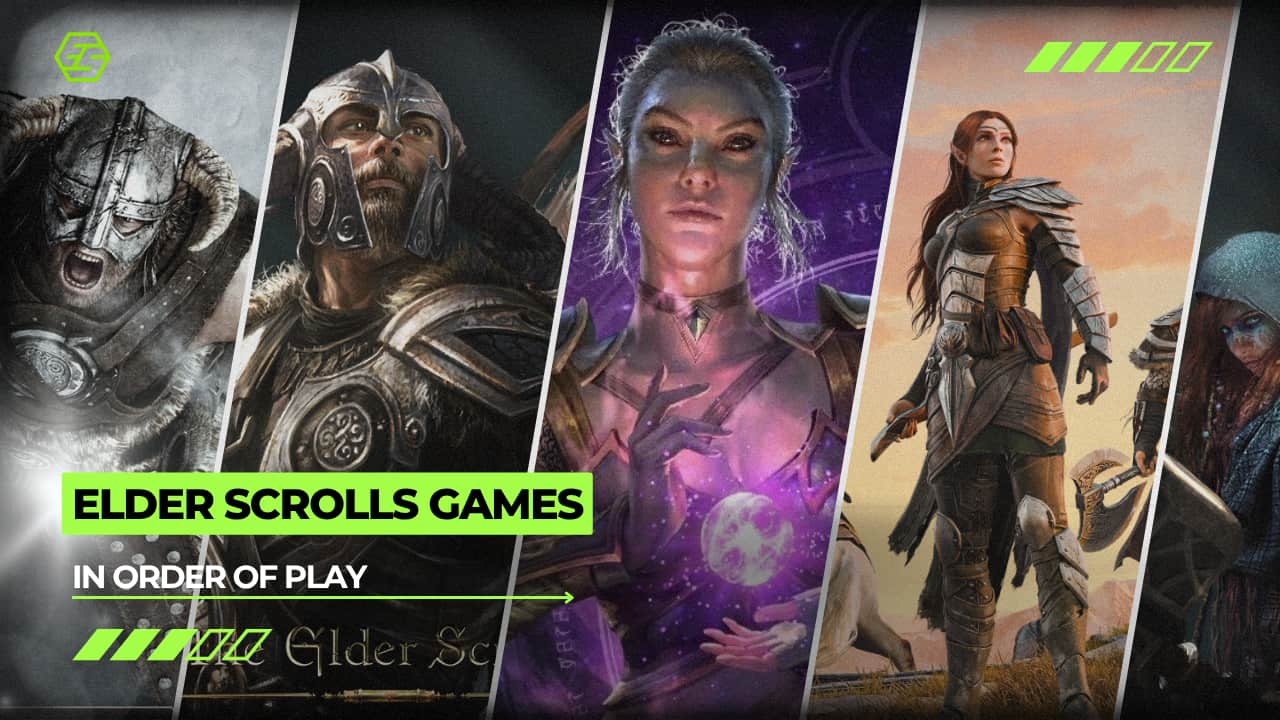
All Elder Scrolls Games in Order of Release
(Arranged by original launch dates)
- The Elder Scrolls: Arena – March 25, 1994
- The Elder Scrolls II: Daggerfall – September 20, 1996
- An Elder Scrolls Legend: Battlespire – November 30, 1997
- The Elder Scrolls Adventures: Redguard – October 31, 1998
- The Elder Scrolls III: Morrowind – May 1, 2002
- Tribunal (Expansion) – November 8, 2002
- Bloodmoon (Expansion) – June 3, 2003
- Stormhold (Travels) – August 1, 2003
- Dawnstar (Travels) – August 26, 2004
- Shadowkey (Travels) – November 11, 2004
- The Elder Scrolls IV: Oblivion – March 20, 2006
- Knights of the Nine (Expansion) – November 21, 2006
- Shivering Isles (Expansion) – March 26, 2007
- The Elder Scrolls V: Skyrim – November 11, 2011
- Skyrim: Dawnguard – June 26, 2012
- Skyrim: Hearthfire – September 4, 2012
- Skyrim: Dragonborn – December 4, 2012
- The Elder Scrolls Online – April 4, 2014
- The Elder Scrolls: Legends – March 9, 2017
- Skyrim VR – November 17, 2017
- The Elder Scrolls: Blades – May 12, 2020
- Skyrim: Anniversary Edition – November 11, 2021
- The Elder Scrolls: Castles – September 10, 2024
- Oblivion Remastered – April 22, 2025
Elder Scrolls Games in Chronological Order
Here’s how all the Elder Scrolls games in order fall into place when we look at them from a story perspective.
1. The Elder Scrolls Online (2E 582)
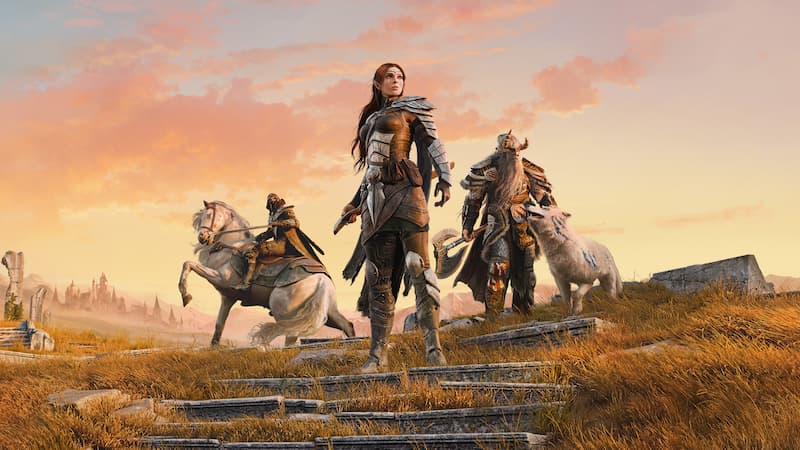
Image Credits: Bethesda Softworks
Taking place around a thousand years before Skyrim, ESO throws players deep into the Second Era. You get to choose from three factions, all vying the Ruby Throne, while a much bigger threat – Molag Bal, hangs over everything. The game really shines in scope, exploring places like Summerset, Morrowind, and Elsweyr in impressive detail. Ever since its release in 2014, it’s been getting constant updates. And now, with the 2025 Gold Road expansion, there’s so much lore packed into it. It’s probably the best pick for players who like seeing a world evolve over time.
- Price: €19.99
- Platforms: PC, MacOS, Playstation 4/5, Xbox One/X/S
2. The Elder Scrolls Adventures: Redguard (2E 864)
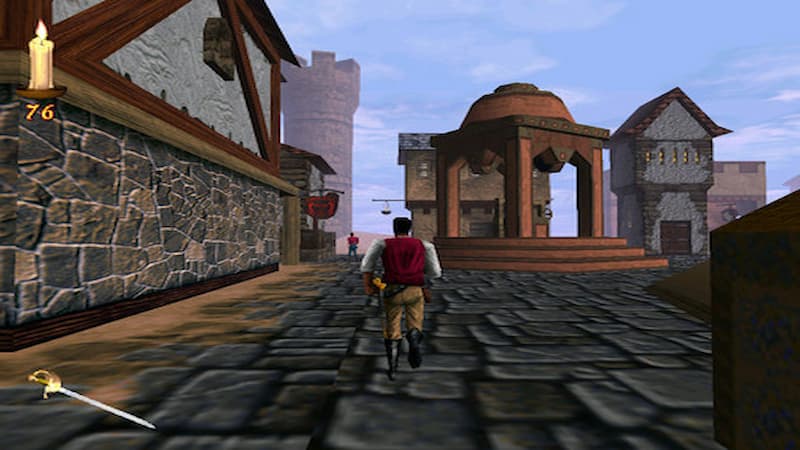
Image Credits: Bethesda Softworks
This one’s quite different from the usual RPGs. Redguard is more of an action-adventure game, and it came out in 1998. You play as Cyrus, a sword-for-hire, searching for his sister during the Tiber Wars in Stros M’Kai. The game focuses heavily on Redguard culture and political stuff happening in Hammerfell. Although it’s a bit linear, it stands out for how it tells its story, almost like watching a movie. It’s a valuable peek into a culture often overshadowed in the series.
- Price: €5.99
- Platforms: PC
3. The Elder Scrolls: Arena (3E 389-399)
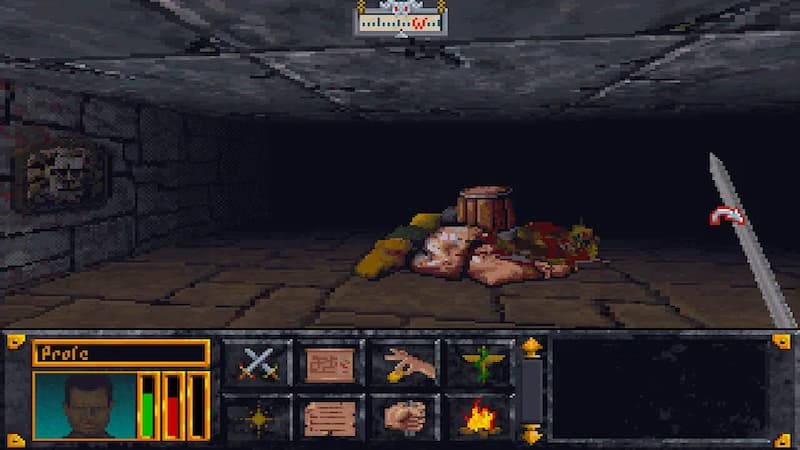
Image Credits: Bethesda Softworks
Arena was the game that kicked off the franchise, way back in 1994. You become the Eternal Champion, trying to save Emperor Uriel Septim VII from a Daedric trap laid by Jagar Tharn. What made this game special back then was its ambition. You could travel across the whole of Tamriel. Its world was procedurally generated, and for its time, it felt like a real fantasy continent. Sure, it’s pretty rough now, but for fans who want to see where the series began, it’s essential. The building blocks of what Elder Scrolls would become are all there.
- Price: Free
- Platforms: PC
4. The Elder Scrolls Travels: Shadowkey (3E 397)
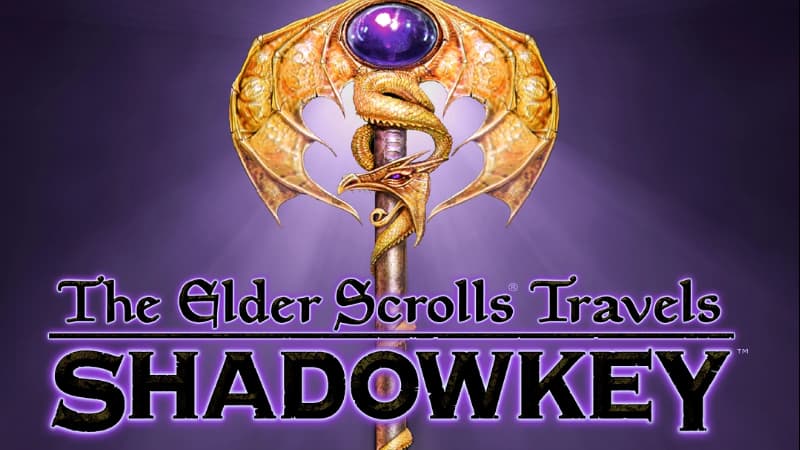
Image Credits: Bethesda Softworks
Shadowkey doesn’t get mentioned much, mostly because it came out for the N-Gage in 2004. It happens around the end of Arena’s timeline, in the Western Reach. You’re caught between rival magical factions and a powerful artefact, the Shadowkey. Despite the hardware limits, it tries to bring familiar Elder Scrolls themes to mobile: exploration, Daedric plots, and even appearances by characters like Sheogorath. It’s not a game you have to play, but if you’re curious about the series’ portable experiments, it’s an interesting one.
- Price: Free (Abandonware)
- Platforms:N-Gage
4. An Elder Scrolls Legend: Battlespire (3E 398)
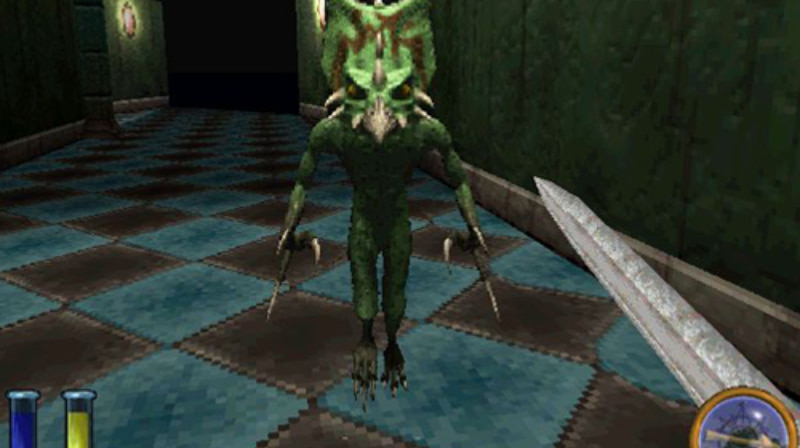
Image Credits: Bethesda Softworks
Battlespire drops you straight into Oblivion instead of Tamriel, turning the game into a survival dungeon crawl. You’re a battlemage apprentice stuck in the Daedric realm after an invasion by Mehrunes Dagon. Released in 1997, it doesn’t focus much on the politics of the Empire, but instead dives into Daedric environments and conflicts. It’s one of the first glimpses into how the planes of Oblivion work. Definitely not beginner-friendly, but if you’re into darker, more obscure corners of Elder Scrolls lore, this one’s pretty meaningful.
- Price: €5.99
- Platforms: PC
5. The Elder Scrolls II: Daggerfall (3E 405-417)
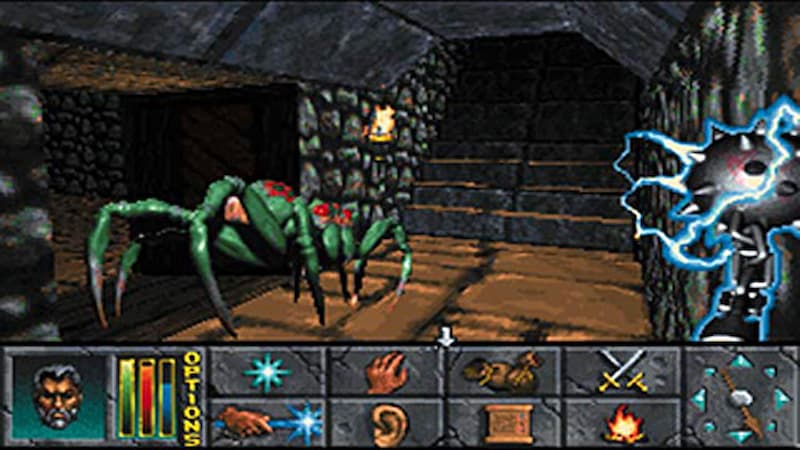
Image Credits: Bethesda Softworks
Daggerfall was ambitious beyond belief. Released in 1996, its map was absurdly huge, comparable in size to Great Britain and featuring thousands of locations. You investigate a royal ghost and hunt for Numidium, a golem of immense power. The ending, known as the Warp in the West, was a clever way to make all possible outcomes canon. Daggerfall changed how stories in games could be told, using branching paths and complex guild systems. It’s dense, confusing at times, but incredibly rich in lore. It’s like a history book turned into a game.
- Price: Free
- Platforms: PC
6. The Elder Scrolls Travels: Stormhold & Dawnstar (3E, unknown dates)
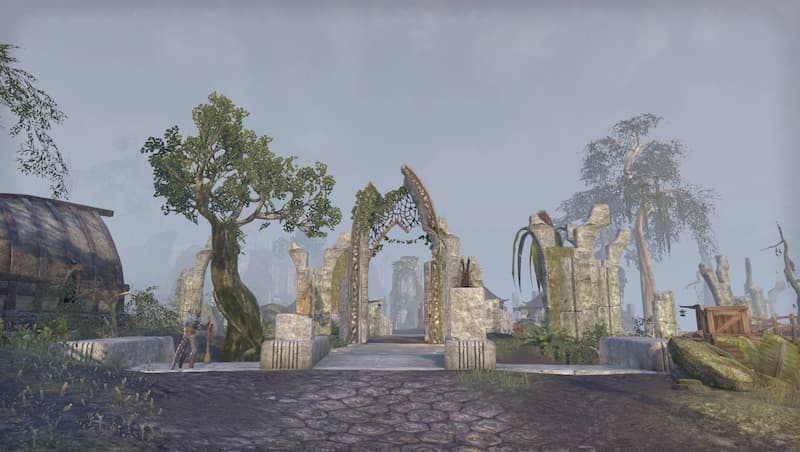
Image Credits: Bethesda Softworks
Stormhold and Dawnstar came out in the early 2000s for basic mobile phones. Stormhold has you escaping a corrupt prison colony, while Dawnstar deals with cults and nightmares in a remote town. They’re short and simple dungeon crawlers. Don’t expect a deep story or complex systems, these were more about getting a small taste of Elder Scrolls on the go. Even though they don’t matter much to the main plot, they show the franchise’s early steps into mobile gaming.
- Price: Unavailable
- Platforms: Portable
7. The Elder Scrolls III: Morrowind (3E 427)
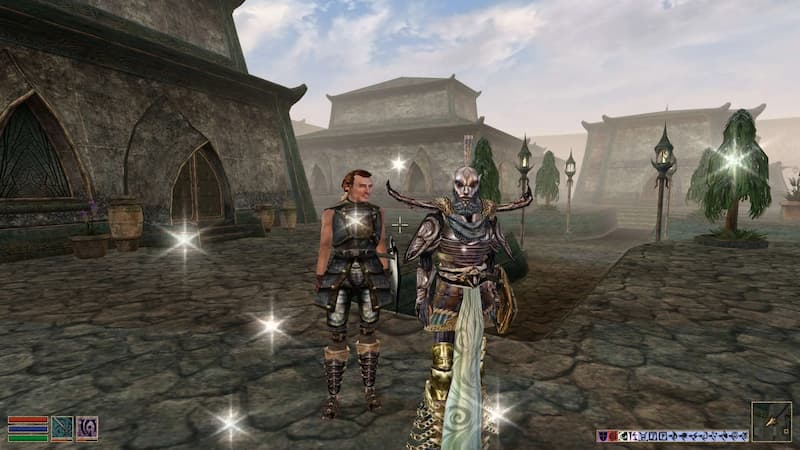
Image Credits: Bethesda Softworks
Morrowind was the game where everything changed. Set in the alien-like island of Vvardenfell, you’re the Nerevarine, a prophesied hero meant to defeat Dagoth Ur. The game’s look and feel were totally different from traditional fantasy. Add its expansions, Tribunal and Bloodmoon, and you get stories about gods, politics, and ancient powers. Released in 2002, Morrowind still gets praise for its freedom and weirdness. The writing is deep, and choices often have unclear consequences. It’s a game that expects you to read, explore, and think.
- Price: €14.99
- Platforms: PC, Xbox
Read Also: All God of War Games in Order of Release & Timeline
8. The Elder Scrolls IV: Oblivion (3E 433)
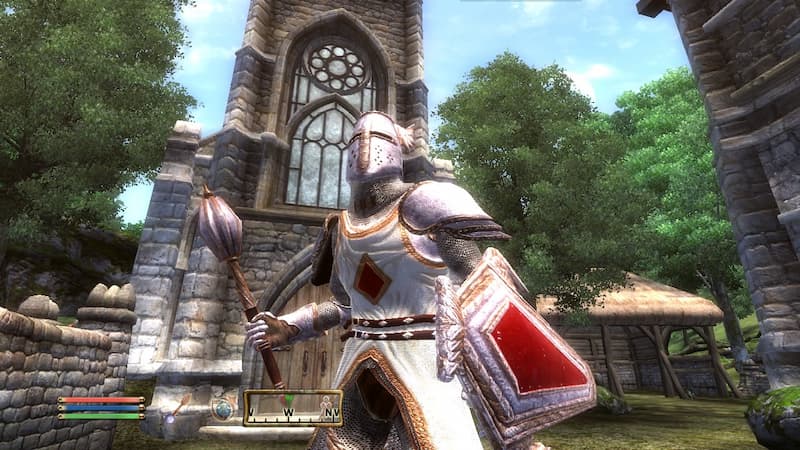
Image Credits: Bethesda Softworks
Oblivion tells the story of an empire in chaos. The Emperor is murdered, Daedric gates are opening, and the world is under threat. You, as the Hero of Kvatch, help close these gates and bring back order. There’s also the Knights of the Nine, which explores religious lore, and Shivering Isles, where you deal with madness itself. Launched in 2006 and remastered in 2025, Oblivion walked the line between classic depth and modern accessibility. The world is lush, the quests are many, and it marked the end of the Third Era with a bang.
- Price: €14.99
- Platforms: PC, Playstation 3, Xbox 360
9. The Elder Scrolls IV: Oblivion Remastered (3E 433)
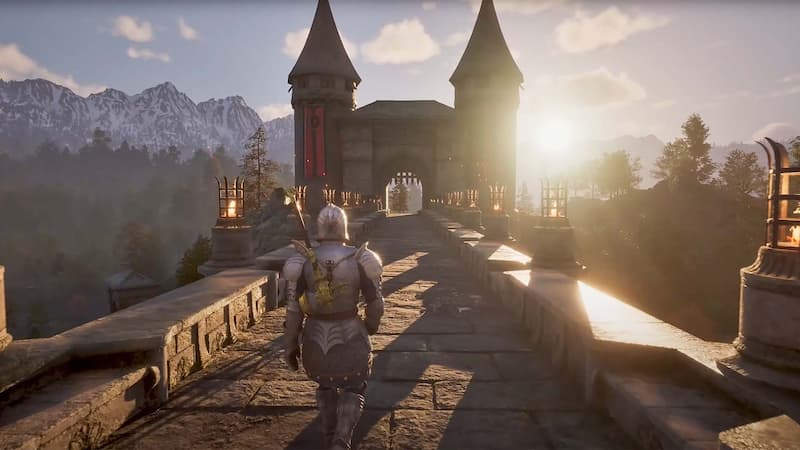
Image Credits: Bethesda Softworks
This 2025 remaster updates the original Oblivion with better graphics, smoother gameplay, and other tweaks. It’s basically the same game in terms of story. You’re still trying to stop Mehrunes Dagon and find the last heir, but now it feels more modern. Great for newcomers who never played it back then, and also for longtime fans who want to see the world of Cyrodiil with fresh eyes. It keeps the heart of the old game while polishing the rough edges.
- Price: €54.99
- Platforms: PC, Playstation 5, Xbox X/S
10. The Elder Scrolls: Blades (4E 180)
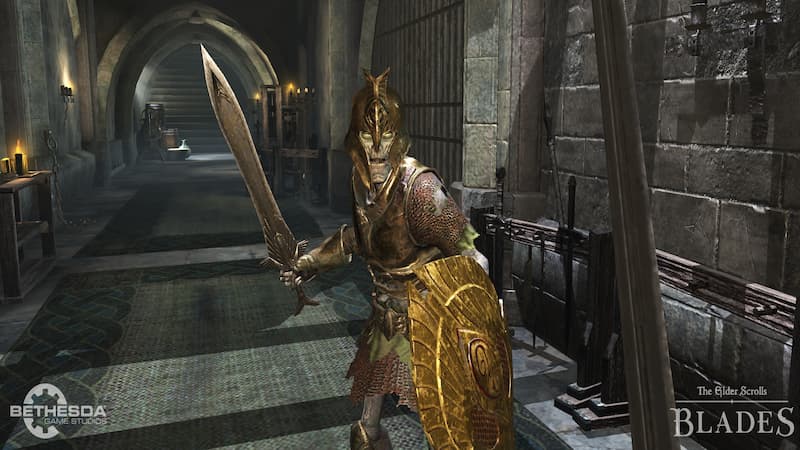
Image Credits: Bethesda Softworks
Released for mobile in 2020, Blades is a bit scaled-down compared to the main series. You’re a former Blade returning to rebuild a ruined town after the Great War. There’s not much exploration, but it does have combat, dungeon crawling, and town-building. It fits somewhere between Oblivion and Skyrim, story-wise. Even though it’s not as big or complex, it gives you a glimpse of what the world was like after the fall of the Empire. A good casual dive into the Elder Scrolls universe.
- Price: Free
- Platforms: Android, iOS, Nintendo Switch
11. The Elder Scrolls V: Skyrim (4E 201)

Image Credits: Bethesda Softworks
Skyrim became a phenomenon when it launched in 2011. Set centuries after Oblivion, you’re the Dragonborn, tasked with defeating Alduin while choosing sides in a civil war. Its open world, quests, and modding community helped make it a modern classic. The expansions add more depth: Dawnguard tackles vampires, Hearthfire lets you build homes, and Dragonborn returns to Solstheim. It’s been re-released countless times, even in VR and as an Anniversary Edition. There’s a reason why people keep coming back to it.
- Price: €39.99
- Platforms: PC, Playstation 3/4/5, Xbox 360/One/X/S, Nintendo Switch
12. The Elder Scrolls: Legends (4E, various dates)
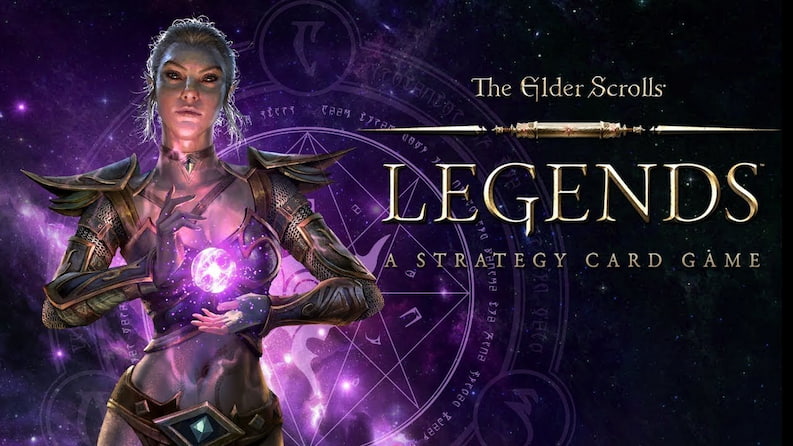
Image Credits: Bethesda Softworks
Legends is a card game rather than a traditional RPG. Released in 2017, it tells stories across the Fourth Era using strategic battles. You build decks, fight famous characters, and explore events around the Great War. It’s not essential, but it’s great if you enjoy lore and want a different way to experience it. The game has been delisted by 2025, but during its run, it added another way for Elder Scrolls fans to connect with the universe.
- Price: Unavailable
- Platforms: PC, MacOS, iOS, Android
13. The Elder Scrolls: Castles (Spanning Eras)
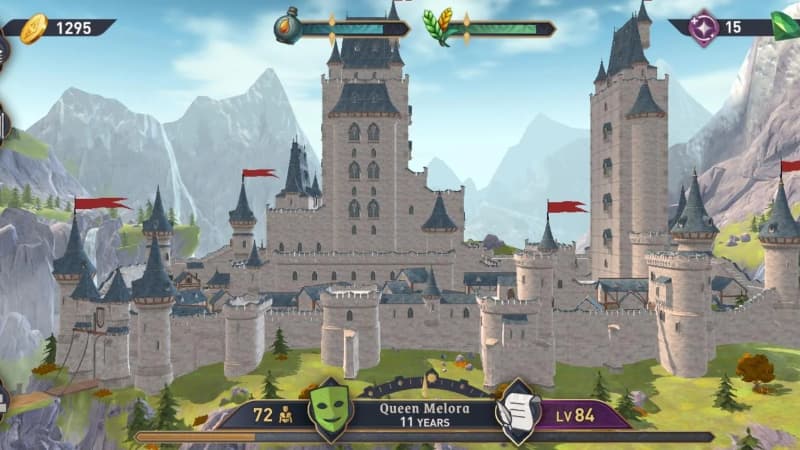
Image Credits: Bethesda Softworks
Castles launched in 2024 and focuses on managing dynasties rather than adventuring. You control a noble family across generations, handling politics, wars, and royal drama. It covers various eras of Tamriel’s history, though it doesn’t dive deep into specific stories. Think of it as a broad overview rather than a focused tale. It’s a different kind of Elder Scrolls experience, more about strategy and legacy than dungeons and dragons. A neat spinoff for fans who like thinking about the big picture. It is also considered the last of the Elder Scrolls games in order.
- Price: Free
- Platforms: Android, iOS
Read Also: Fallout Games in Order of Release and Story Timeline
